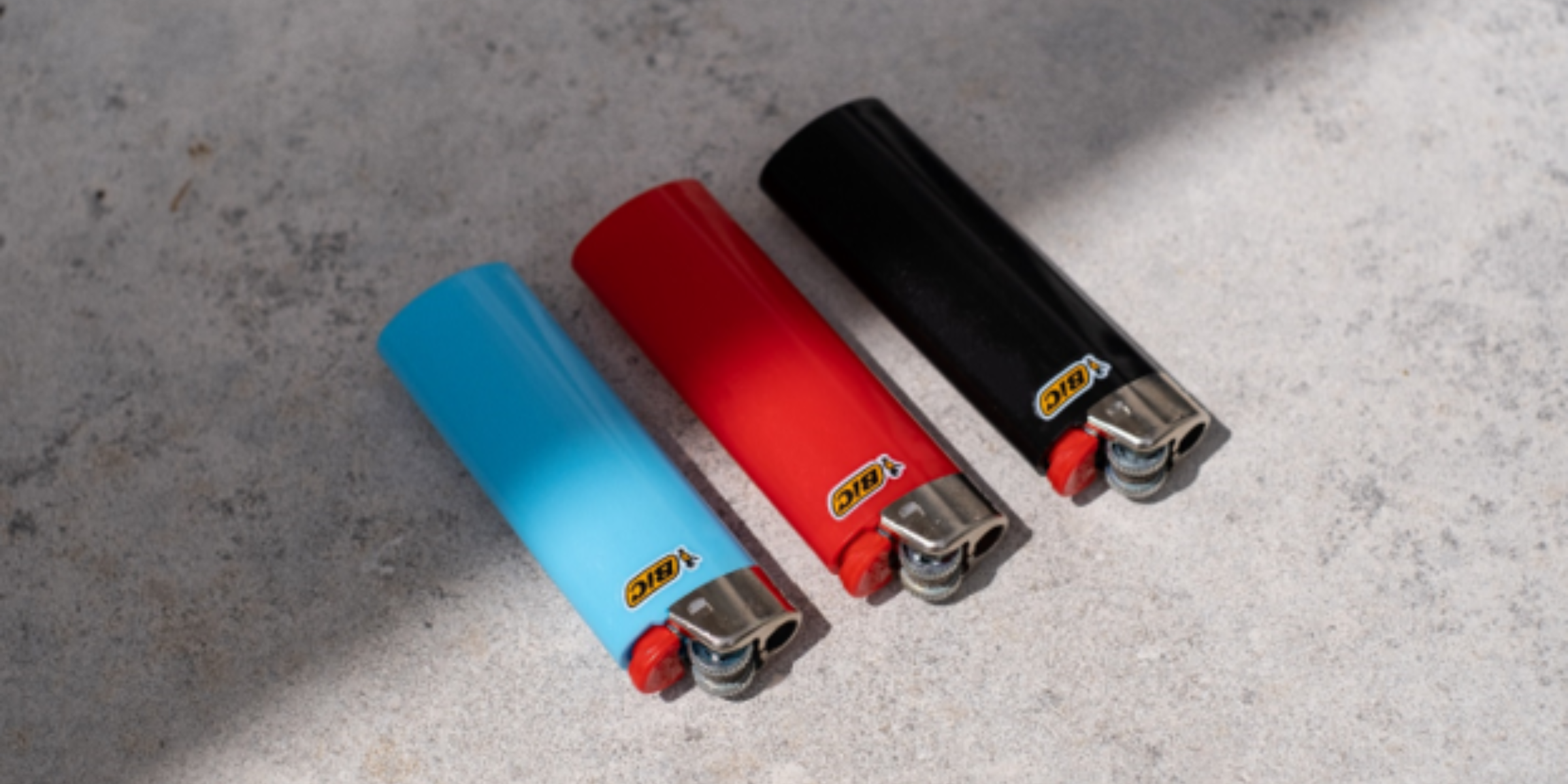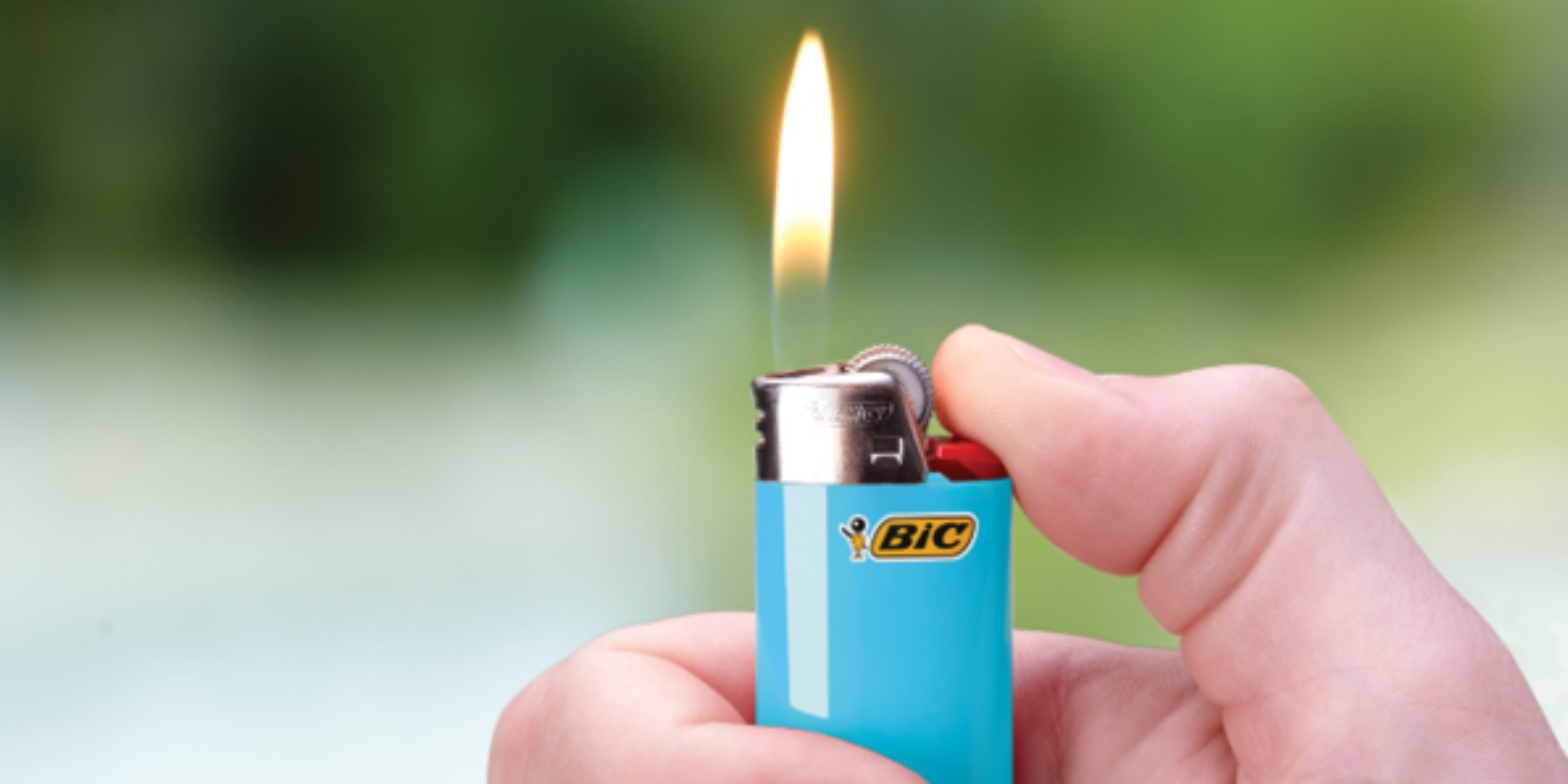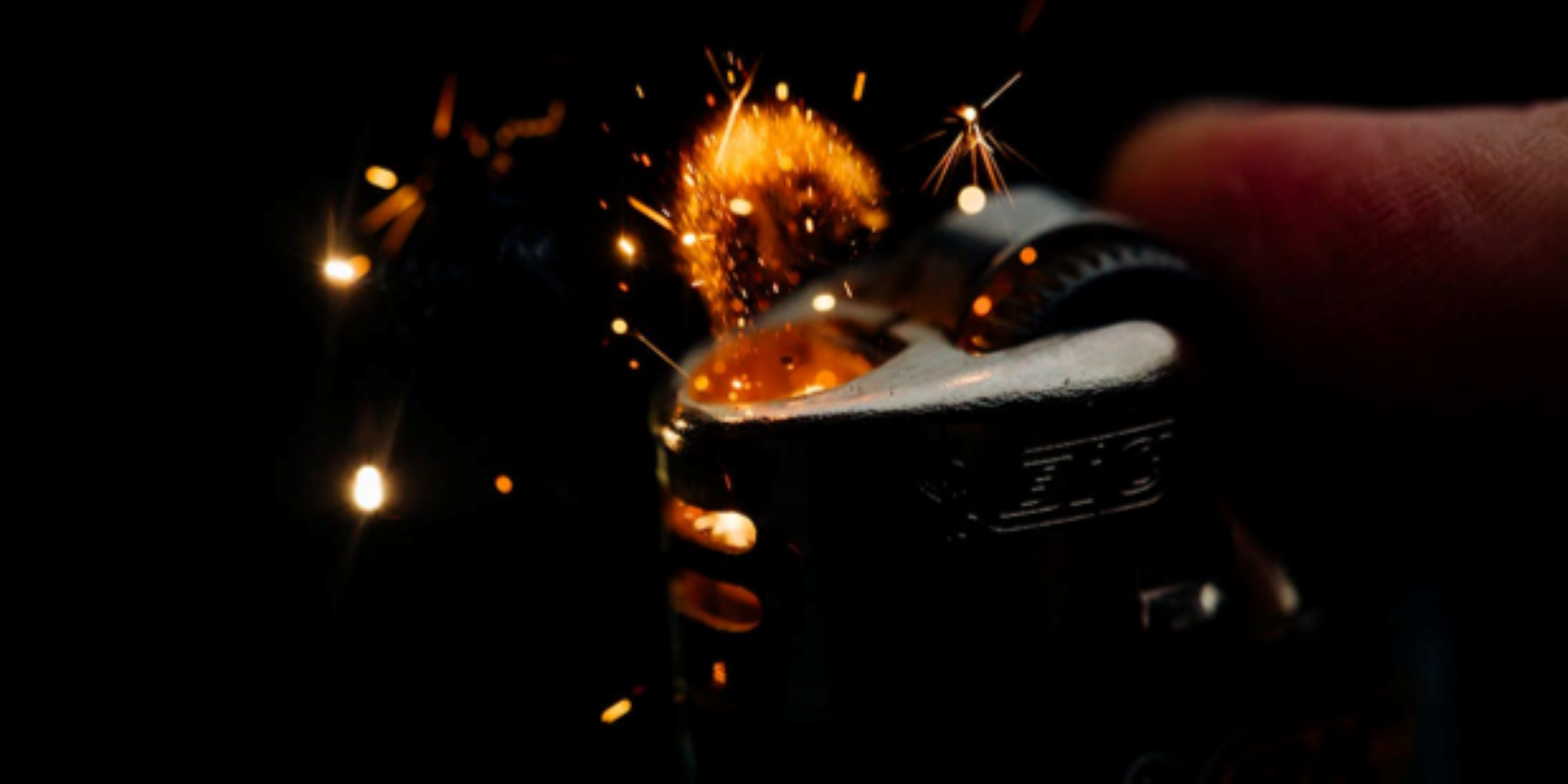Spark your interest: This is how we make BIC® lighters!
We want you to think of a lighter. Picture it in your head. Really envision it like it's in front of you. Got it? The lighter you pictured was a BIC lighter, right? The shape, the iconic red button, and the orange BIC Boy? That's no surprise! BIC is the world's largest manufacturer of branded pocket lighters and since our first pocket lighter was released in 1973, we've produced and sold over 30 billion lighters!

Our four global factories produce over 6 million lighters daily, and the demand for them is still growing steadily. In this article, we'll let you in on some of our manufacturing secrets to give you some insight into what makes BIC lighters so iconic!
Firstly, though… why are BIC lighters shaped like that?
One of the defining characteristics of the BIC lighter is the unique ergonomic shape. The founder of BIC, Marcel Bich, chose the shape of the BIC lighter because, according to his son and inheritor of the company, Bruno Bich, "He just wanted it to fit the hand perfectly." In fact, BIC's first ever lighter advert came with the tagline "your hand will make a difference." So, if you were wondering why our lighters feel so good to handle, just know we did that on purpose.
How are BIC lighters made?
Central to the whole manufacturing process – and in many ways, what makes BIC lighters such trusted household staples – is the concept of continued "quality safety" in every step of our manufacturing process. From the concept of simplicity to production with integrated controls, we want to offer our customers the safest lighter possible. Our lighters are manufactured in four factories worldwide: France, Spain, the USA and Brazil. This means we can closely monitor and quality control every step of the manufacturing process.
"Our lighter manufacturing process is completely integrated. From the conception of the moulds, machines and tools to the assembly line and final controls of the products in our machines," elaborates Frene Frigiere, BIC Quality Director for Lighters. "This is the starting point of the safety of Bic lighters." We make sure to use the best raw materials, the best components and the best manufacturing processes to design and manufacture our products. Then we send them off to the best customers, you.
What are the components and features of a BIC lighter?
The lighter body (the funky colourful bit you see) is made of a technical resin called Delrin. It's a crystalline compound that's incredibly resistant to ruptures, impacts and high temperatures. Have you ever seen a BIC lighter leak? That's because of the Delrin resin!
This material allows us to make a lighter with very thin linings, which ends up increasing the number of lights each device can produce. You can get up to 3000 individual lights out of your BIC. It's small yet powerful. We fill the lighter body with a gas called 'isobutane.' Thanks to the use of isobutane gas, the gas pressure in BIC lighters is stable. You'll notice that the flame will stay the same length throughout your BIC lighter's lifespan. That's an isobutane thing!
Regarding the striking mechanism, we use a cold stamping process to manufacture the valve body. This uses a pure electrolytic aluminium wire, which prevents any chips or cracks in the lighter mechanism, which could prove dangerous if they falter.
To get more technical, we believe our main strength in lighter safety is our use of zinc-alloy die casting. We inject liquid metal (at 400 degrees Celsius) into high-precision moulds, guaranteeing an accurate cast to the 1/100th of a millimeter! This means precise engineering and no accidental fire hazards.
Why is the BIC lighter manufacturing process so precise?
In short, the process is meticulous because it just makes for a better product for our customer. Lighters must comply with rigorous international safety standards, but at BIC, we've chosen to exceed these standards, and that's why we're so ubiquitous in the lighter market.
How do we exceed standards? Here are a few examples:
- Existing safety standards (as set out internationally in 1994) say that a lighter should be able to resist three drops from a height of 1.5 meters without breaking. BIC lighters can resist drops from 3m easily and can continuously be dropped many more times than competitor lighter brands.
- The same set of standards dictates that lighters should be able to resist temperatures of 64 degrees for 4 hours without any damage. BIC lighters consistently resist 75 degrees for over 8 hours at a time. That's almost water's boiling point for a third of a day!
- Internal pressure standards for lighters sit at 15 bars, but ours easily resist an internal pressure of 30 bars. We just like exceeding expectations like that.

How do you make sure all BIC lighters meet quality safety standards?
It's simple. We check them all! We use a video control system alongside electronic testing to ensure that every lighter that passes through our facility is adequately quality-controlled. More than one person checks 100% of the production process and dozens of eyes pass over every lighter we manufacture. If you have a BIC lighter in your pocket, someone at one of our four facilities has ensured it's good enough for you. 25% of the time a lighter spends in the BIC factory is dedicated to quality control!
Where can I get a BIC lighter?
Pretty much everywhere! BIC lighters are widely sold at convenience stores, fuelling stations and tobacconists across Africa and the Middle East. In fact, you'd be surprised at how remote some of our points of distribution are.
Head down to your local store and pay an affordable price for almost 50 years' worth of quality, innovation and durability – in a colourful little resin package. Trust BIC lighters to carry (and light) the torch of easy-to-use functionality and safety today!

